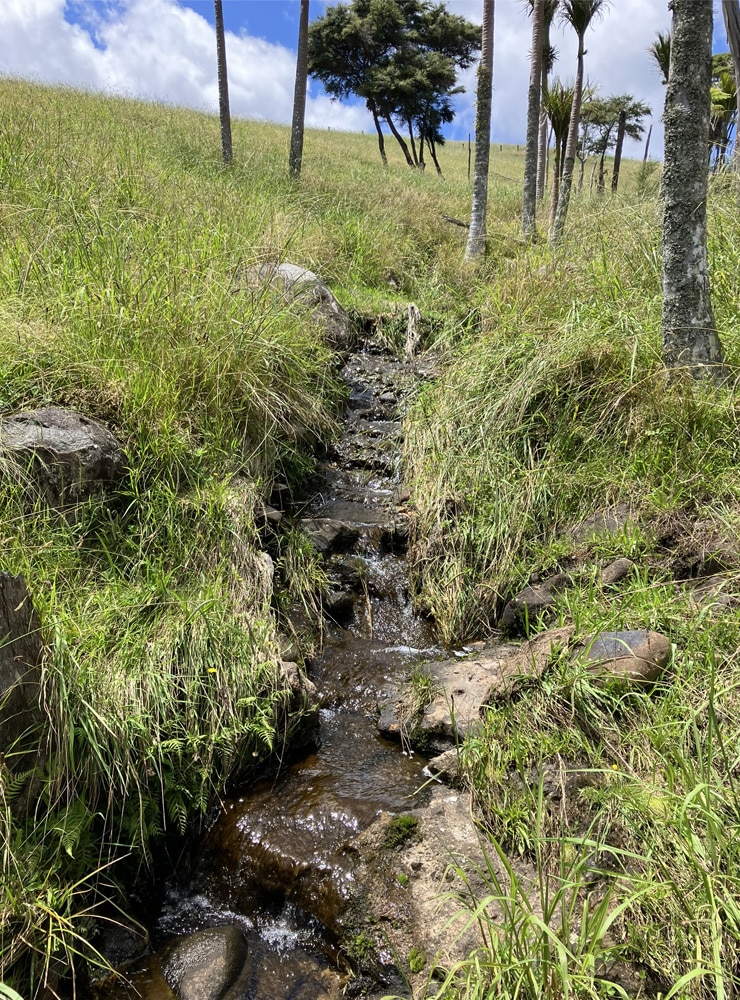Written by Myles Goodwin | Rural Subdivision Expert, Environmental and Planning Director | Cato Bolam Consultants
One of the issues we come across as Land Development Consultants when undertaking urban subdivisions is that sometimes streams need to be modified to facilitate housing. The first approach is to avoid stream modification or removal however, it is sometimes unavoidable. When removal occurs, mitigation to offset the stream loss is needed. This can be by way of restoring streams in rural areas, ideally in nearby catchments, but otherwise somewhere in the Auckland Region. Developers of urban sites are therefore sometimes looking for rural sites that have streams that need restoration.
A methodology has been developed whereby the ecological values lost by the urban stream removal are calculated, with that calculation then applied to the rural area where stream restoration is proposed. The exact length of restoration that is needed can then be worked out. Ecological restoration work on the rural stream is undertaken at the developers costs and usually involves planting the streambanks with native trees, controlling weeds and fencing off the areas so stock cannot access. The area is also placed under a protective covenant. The landowner where the mitigation occurs would generally be offered compensation by the urban developer for any inconveniences related to the ongoing presence of the covenant.
At present, we have clients seeking rural properties with streams that would benefit from restoration and protection to mitigate an urban stream loss. Therefore, if you have a property with a stream, preferably of at least 100m in length, and you are interested in having it fenced off, planted and covenanted at no cost to you, then please get in touch and we will make some initial investigations.
If the initial investigations are promising then our ecologists would visit your property to assess the stream, check that it is suitable, and develop a mitigation proposal. If this was acceptable, the rural landowner and urban developer would agree the details. The planting, fencing, weed control and covenanting would then occur as a condition of the urban developers consent. The covenant would
be in perpetuity however, the developer would generally cover the first five years maintenance, and after that time a closed native canopy would be expected, with a much reduced need for ongoing maintenance. After the initial five years the rural landowner would be responsible for ongoing maintenance in the long term. Therefore, there is the possibility of a win/win situation here, with rural streams being restored as a result of developments that allow for urban housing.
Myles Goodwin and the Cato Bolam team provide start to end subdivision services.
Please contact Myles for an obligation free discussion via [email protected]
Or get in touch with our team using the contact button below.


